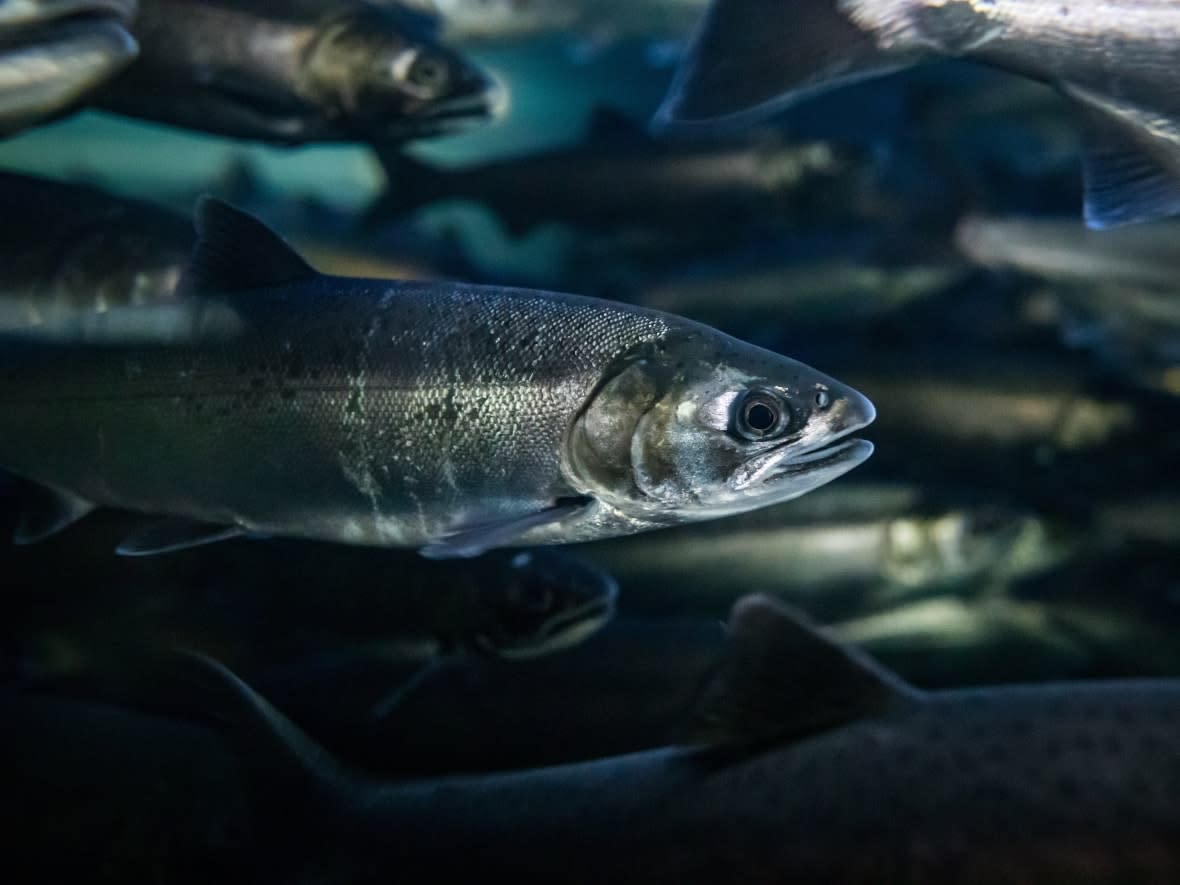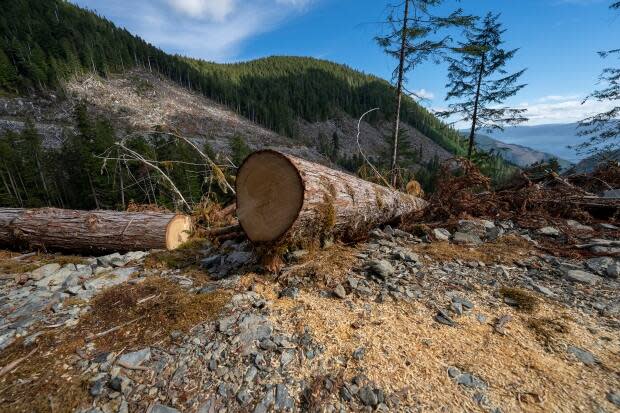Logging near streams in B.C. Interior is warming water and threatening coho salmon: study

Decades of logging activities near rivers in B.C.'s Interior are driving up the temperatures of coho salmon habitats and threatening the species' survival, according to a new study.
The study by Simon Fraser University and Fisheries and Oceans Canada (DFO), published last month in the Canadian Journal of Fisheries and Aquatic Sciences, looked into 28 tributaries of the North Thompson River watershed from Kamloops to Valemount.
It found the more extensive the logging activities near headwater streams, the higher the water temperature during the summer.
Among tributaries with upstream riverbank trees harvested between 1970 and 2019, those with 35 per cent of trees harvested had a summer water temperature 3.7 C higher than those with five per cent of trees harvested, data showed.
Lead author Dylan Cunningham, an SFU graduate student in resource and environmental management who now works with DFO as a biologist, says large-scale logging changes the hydrology of the watershed system, causing the streams' temperature to increase.
"As more land is exposed, snow melts earlier, runs into the rivers and has less of an opportunity to absorb into the ground, so what we see is the summer low flows are even lower than in watersheds with extensive forest cover. Smaller streams are more susceptible to changes in air temperature," Cunningham told host Shelley Joyce on CBC's Daybreak Kamloops.

He says higher water temperatures can slow or even stop fish growth, because salmon are adapted to cool water and higher temperatures increase their metabolism.
"[Under high temperatures] salmon need to find and eat more food to maintain their weight," Cunningham said. "High temperatures can also make salmon more vulnerable to disease and predators, and reduce their spawning success. If temperatures get high enough, fish can even die."
Climate change, deforestation
Scientists have previously warned of the impact of climate change and consequent heat waves on salmon.
Two years ago, California's Department of Fish and Wildlife warned that juvenile chinook salmon in the Sacramento River might not survive a heat wave that made the river more shallow and thus quicker to heat up.
During the same summer, the B.C. Wildlife Federation reported that the temperature of the Okanagan River was more than 23 C, causing sockeye salmon to halt their migration.
Jesse Zeman, director of the federation's fish and wildlife restoration program, says he isn't surprised by the recent findings on coho salmon, which is classified as threatened by the Committee on the Status of Endangered Wildlife in Canada.
Habitats of different salmon species have for decades been jeopardized by deforestation and ensuing low river flows across the B.C. Interior, he said.
"This study really offers us more empirical evidence that the way that forestry has been conducted in British Columbia is not sustainable," he said.
Zeman also says the province has taken steps to amend the Forest Range Practices Act in order to protect the landscape, but significant landscape restoration must be undertaken to save the salmon.
"Without major intervention in terms of hundreds of millions of dollars invested in these watersheds…it doesn't paint a good picture for the future of the fish," he said.


